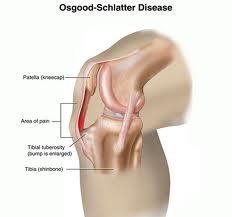[su_divider top=”no” style=”double” divider_color=”#952524″ link_color=”#952524″ size=”2″ margin=”10″]
Osteochondrosis? Osgood Schlatter Disease? What is this? What causes this problem? Is it curable? What are the signs and symptoms? How can homeopathy help you? All of this and more answered, in this post and of course our doctors always there to help you. Just fill in your details in the form down below and we will answer all your questions for FREE!
[su_divider top=”no” style=”double” divider_color=”#952524″ link_color=”#952524″ size=”2″ margin=”10″]
[sc name=”query”]

What is the meaning of osteochondrosis?
Osteochondrosis(also known as Osgood Schlatter) is a failure of the bone underlying the smooth articular cartilage inside the joints this weakness results in cracking and fissure formation in the articular cartilage. Chemicals that cause joint inflammation (synovitis) are released during the development of the flaps and fragments, or as a consequence of exercise on the abnormal surfaces.It can occur in any part of spine.
The affected joints may become visibly enlarged and distended with fluid.
Is there any type of osteochondrosis?
Classification of osteochondrosis:
Articular osteochondroses exhibit the following characteristics:
Primary involvement of the articular and epiphyseal cartilage and a subjacent endochondral ossification center – Freiberg disease
Secondary involvement of the articular and epiphyseal cartilage as a consequence of ischemic necrosis of subjacent bone – Perthes disease, Köhler disease, osteochondritis dissecans
Nonarticular osteochondroses occur at the following locations:
Tendinous attachments – Osgood-Schlatter syndrome, Monde-Felix disease
Ligamentous attachments – Vertebral ring
Impact sites – Sever disease
Physeal osteochondroses involve the following:
Long bones – Tibia vara (Blount disease)
Scheuermann disease
What causes osteochondrosis?
-Lack of blood supply to the affected part
-Injury
– Genetic, Environmental factors
– Infection
– Mineral deficiency (copper, selenium)
– Excess of zinc and manganese
– Imbalance of calcium and phosphorous
– Hormonal imbalance (insulin, thyroxin )
What are the signs and symptoms?
• Painful swelling over a bump on the lower leg bone (shinbone).
• Leg pain, knee pain
• Foot pain and tenderness
• Difficulty in walking
• Joint stiffness
Is osgood schlatter painful?
Pain is the common symptom in osteochondrosis due to an inflammation of the area just below the knee where the tendon from the kneecap (patellar tendon) attaches to the shinbone (tibia).
Can osgood schlatter cause permanent damage?
It does not cause any permanent damage,but, this condition sometimes causes excess bone growth and produces a visible bump where the tendon attaches to the bone. Surgical excision of this bump is sometimes required for persistent pain after growth is complete.
What can osgood schlatter lead to?
Osgood-Schlatter disease occur due to overuse injury of the knee. Frequent use and physical stress lead to inflammation (pain and swelling) of the joint affected.
How do you get to know if you are suffering from it?
• Physical examination
• Bone X-ray
• ESR
• CRP
How it can be prevented?
• The basic principles of therapy for osteochondrosis are as follows:
• Protection and prevention of additional trauma
• Prevention of secondary deformity
• Reduction of the transmission of mechanical stresses to the bone during the process of reossification
• Conservative management includes a course of injections of polysulphated glycosaminoglycans or hyaluronic acid
• Rest and decreasing activity
• Supplementation with calcium and a multivitamin containing trace elements
• Apply traction to relieve pain, prevent deformities.
For more information, you can visit AAFP and Wikipedia.
Osteochondrosis
[sc name=”more-links-diseases”]

